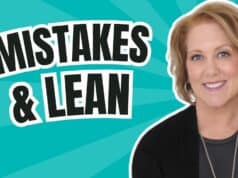As the WSJ article mentions, my wife's purse sometimes calls me… her Blackberry sometimes calls me if she didn't put the keylock feature on.
“Candy-bar style phones, with their keypads exposed, historically have been the culprits. Manufacturers have taken measures to prevent accidental calls. New phones, for example, no longer dial 911 after holding down one digit and often include automatic keypad-lock functions that require the push of a button to unlock.”
The automatic lock function sounds like nice error proofing. I'm not sure about the 1-digit 911 calling, but I'd question something that makes a legitimate 911 call harder. There's a balance between the cost and impact of a mistaken 911 call (which I'm sure happens all the time) versus the cost and impact of someone having a harder time calling 911 in an emergency.
In general, when we error proof a process, we have to make sure we don't inadvertently make it more difficult to use things the intended way.
Please scroll down (or click) to post a comment. Connect with me on LinkedIn.
Let’s build a culture of continuous improvement and psychological safety—together. If you're a leader aiming for lasting change (not just more projects), I help organizations:
- Engage people at all levels in sustainable improvement
- Shift from fear of mistakes to learning from them
- Apply Lean thinking in practical, people-centered ways
Interested in coaching or a keynote talk? Let’s talk.
Join me for a Lean Healthcare Accelerator Trip to Japan! Learn More










Steve Jobs, in his explanation of what is wrong with the current smart phones, claims that the bottom 45% is the problem: the keyboard stays there even if you don’t need it. Enter, the iPhone.
The iPhone is an attempt at implementing some very basic yet important industrial engineering principles, such as encapsulation (hide stuff you don’t need), necessity (have easy access to stuff you do need), etc.
While certainly not perfect, just Apple’s attempt at satisfying basic industrial engineering principles is admirable. I look forward to getting one and trying it out.
Comments are closed.